Patrick Pound, The Museum of there, not there
Anna Parlane
Currently on show in the closed South Yarra premises of STATION, Patrick Pound’s solo exhibition The Museum of there, not there provided the perfect opportunity for the artist to tease and frustrate his viewers. While Pound’s show was scheduled in pre-virus times to coincide with the now-postponed PHOTO2020 festival, the COVID-19 lockdown dictated that the exhibition must be staged online or not at all. Pound has recently made some forays into the digital realm. Together with artist Rowan McNaught he produced thoughts-of-sorts.com (2017), for example, a website and image search algorithm that uses photographs from Pound’s collection as a starting point to generate increasingly eccentric chains of “similar” online images. It would presumably have been possible to stage an online show of such born-digital works. However, with STATION’s gallery spaces rendered out-of-bounds, the artist opted instead to rework two physical collection pieces that thematise their own inaccessibility.
An earlier iteration of The Museum of there, not there (2020), which gives the exhibition its title, was included in Pound’s solo show, The Great Exhibition, at the National Gallery of Victoria in 2017. Photography and Air (2020) also reworks the Museum of Air (2013) in the NGV collection. Like most of Pound’s works, they are installations of found images and objects drawn from the artist’s immense personal collection, and like much of his practice they riff on themes of presence and absence. Re-presented here together behind STATION’s closed doors, the two works now seem to have always anticipated their own disappearance from visibility at the very moment of their public exhibition.
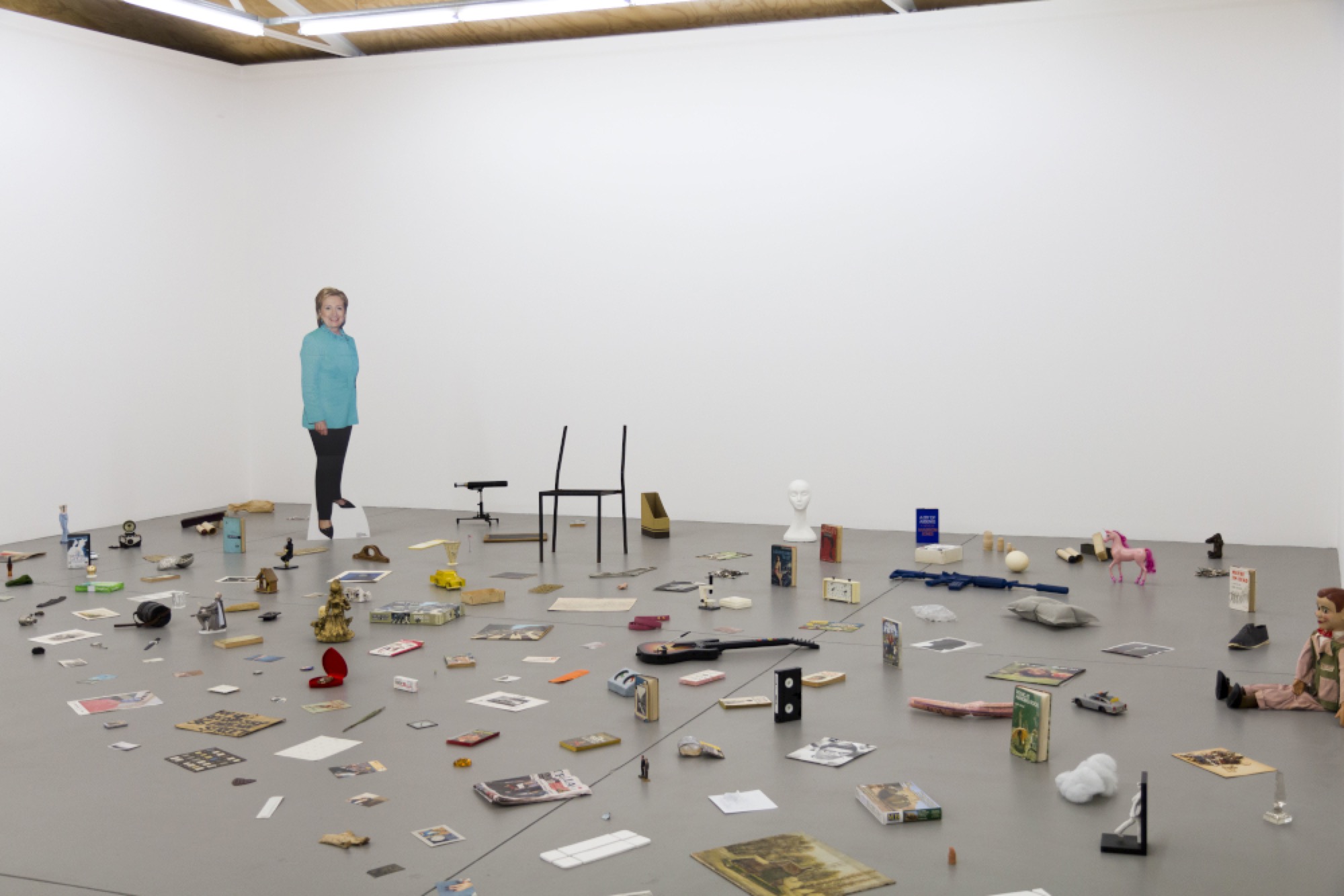
The Museum of there, not there is a collection of images, books and other objects carefully arranged to cover most of the floor of STATION’s larger gallery. A path through this material has been helpfully left open for the exhibition’s (non-existent) visitors. This pathway does double duty of providing access to those items along its edges and blocking access to the objects further back, some of which are far too tiny to see properly from that distance. The criterion for inclusion in this collection is simple but almost infinitely elastic: the object must refer to a thing, event, person or circumstance that is either there, or not there, with priority given to those that have managed both.

Memorials to the lost (a paper sign advertising a lost parrot; a souvenir coin of Prince Charles and Princess Diana’s marriage; a snapshot of the World Trade Center) mingle with memorials to that which never was (paraphernalia associated with Hillary Clinton’s run for President; an unused sewing pattern branded “Make it Real”). The collection catalogues the unwanted (unclaimed and unopened mail marked “return to sender”; a tube of pimple vanishing cream; a pair of “Barely There” microfibre underpants) and the removed (a charcoal drawing of a female nude that has been subjected to selective erasure by a prudish censor). It is also full of the spectral presences of the not-quite-there: a ventriloquist’s dummy; a photograph showing what looks like the cast plaster remains of a victim of Pompeii; the now-empty moulded plastic packaging of a pair of scissors; a Bermuda Triangle board game.
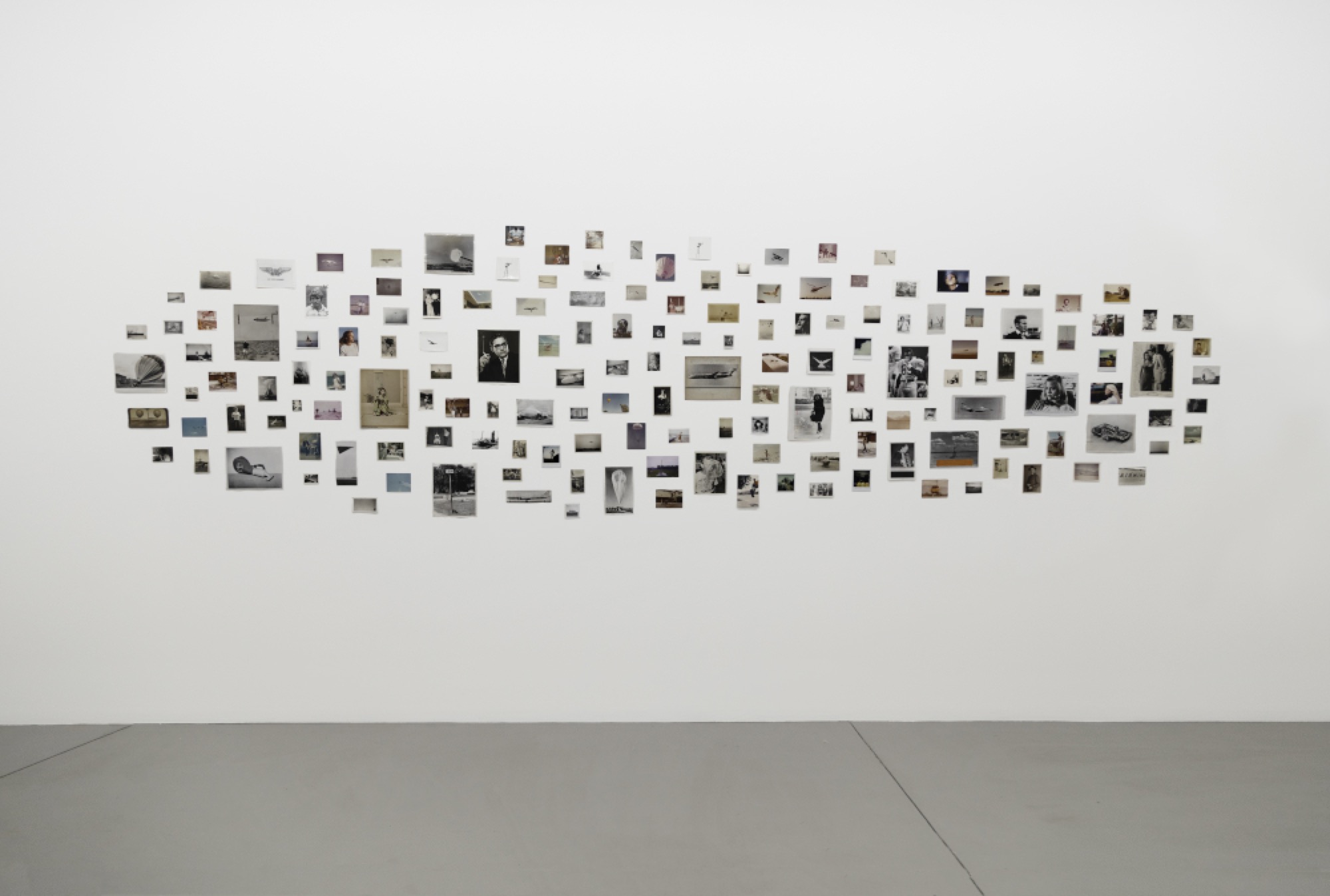

In the smaller gallery space, Photography and Air also brings together manifestations of the semi-present. Photographs that all somehow visibly capture air are pinned up in a cloud formation: hot air balloons, long-haired people photographed on windy days, smokers and piano accordion players abound. The archival nature of Pound’s project is underlined by a sequence of pairs of images hung on the opposite wall, each of which is presented on the sort of swing files used in filing cabinets.
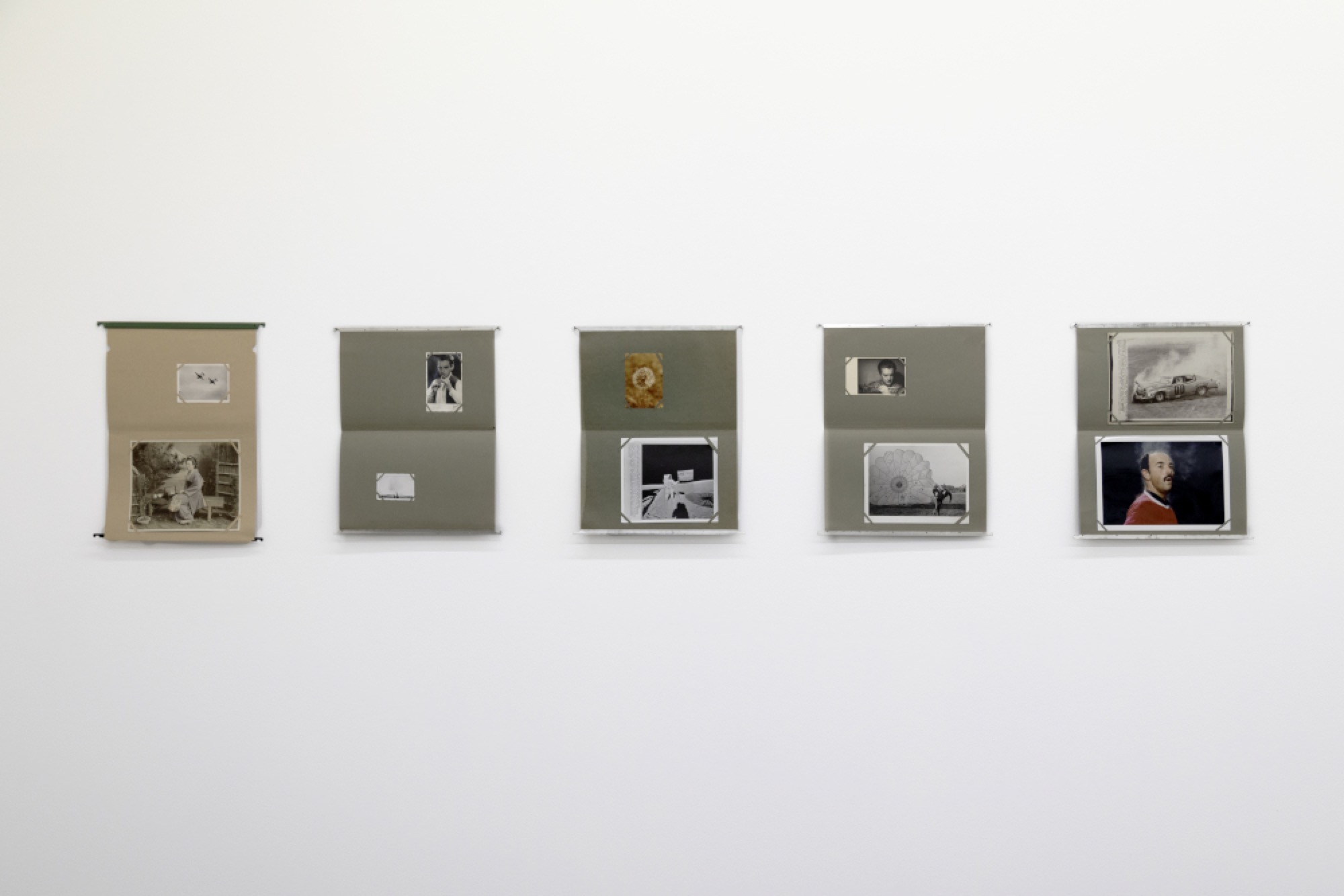
I was not able to provide this detailed description because the web version of Pound’s nominally online show enables close looking—it doesn’t. Having leveraged my privilege as a Memo reviewer into a private viewing invitation, I ventured into the virus-infested wilds of South Yarra to see the show in person. As one of only a handful of viewers able to directly encounter Pound’s exhibition, however, I can report that the frustrations of the online viewing experience are replicated on site. A substantial proportion of The Museum of there, not there is either positioned too far away to see properly or is in a format that renders it unavailable for inspection. In addition to several literally closed books—classics like Ovid’s Metamorphosis alongside tantalising offerings like In Praise of the Half-Forgotten and Other Ruminations by the half-forgotten author George Brandon Saul—Pound has included player piano scrolls, vinyl records and boxed VHS tapes that cannot be heard or seen. Not only has my verbal account become an ekphrastic substitute for your in-person experience of the work, it is necessarily even more incomplete than a written description of an artwork usually is. In writing about Pound’s show, I am therefore co-opted into its logic of partial revelation and restricted visibility.

Of course, in a globalised art world—pandemic or no pandemic—the vast majority of audiences for any given artwork will only ever know it through a press release and a handful of digital install shots. David Joselit’s book After Art (2012) describes a shift from object-based to network-based aesthetics, or in other words a shift from an art world centred on production to one centred on circulation. He argues that art’s value increasingly rests on its ability to form connections, or make legible its connectivity: “What now matters most is not the production of new content but its retrieval in intelligible patterns … What counts, in other words, is how widely and easily images connect: not only to messages, but to other social currencies like capital, real estate, politics, and so on. In economies of image overproduction connectivity is key. This is the Epistemology of Search.”
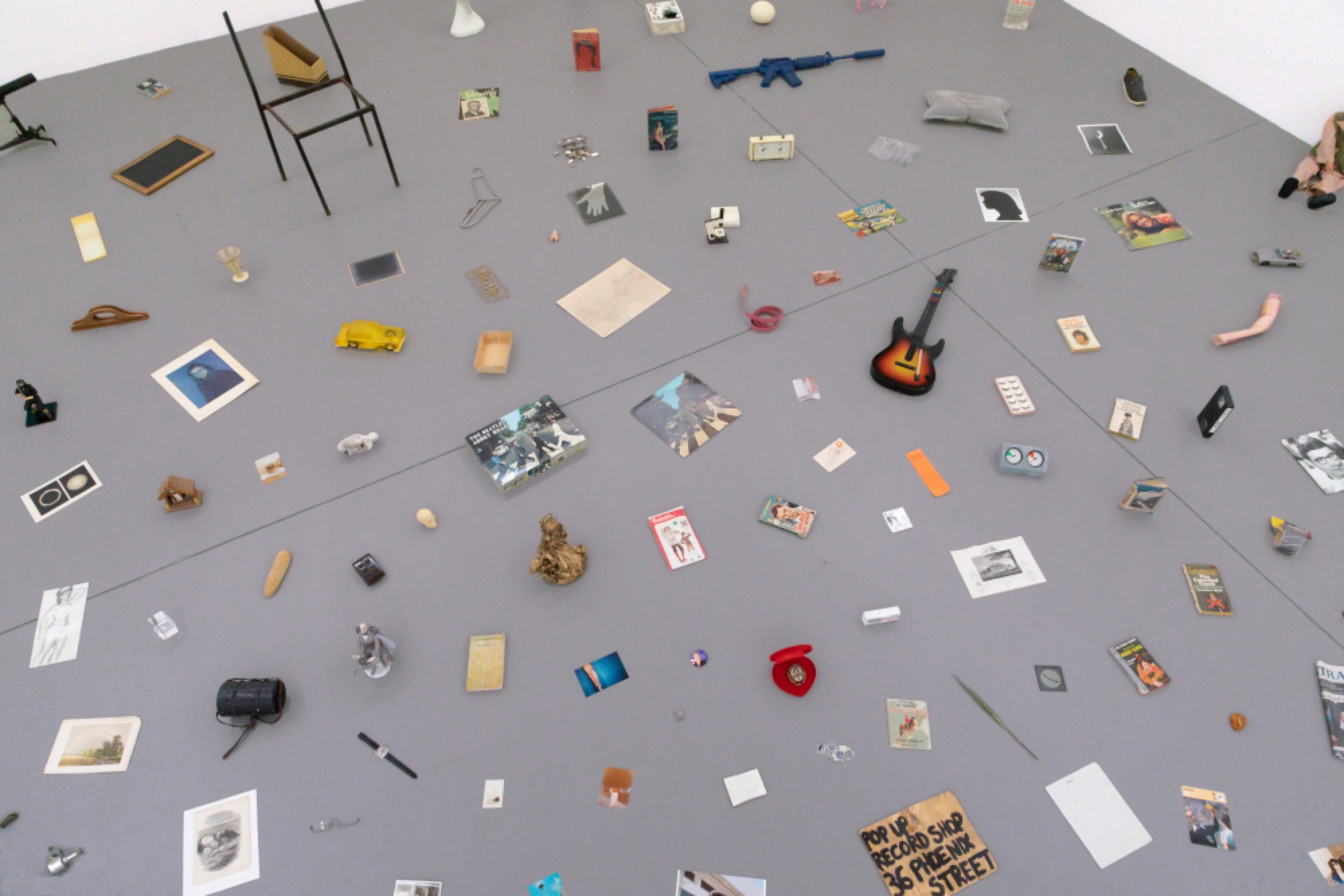
Pound’s eBay-sourced and continuously reconfigured collections of found images and objects, presented in multiple iterations that often literalise the atomised form of a tag cloud, might seem at first glance the perfect embodiment of Joselit’s network aesthetics. The point of the artist’s idiosyncratic thematic groupings is to form revelatory connections, while recognising that those connections are no more necessary or final than any others. However, the “image commons” that Joselit describes seems completely available to be criss-crossed by multiple trajectories of connection. Like so many theorists of the digital, he doesn’t acknowledge the real problem of limited accessibility.
Pound’s physical collection-centred practice has typically been understood within a Benjaminian framework emphasising how it brings decontextualised fragments into revelatory juxtaposition. And like Benjamin in a chaos of crates as he unpacked his library, Pound has the kind of storage problems that Joselit doesn’t consider. As he told Serena Bentley: “I store my things in my studio. It’s full now though. People say can I come and see your studio. I say, sure we can look through the window. When they get here they realise I wasn’t joking. I also have storage in the roof of our house but that’s full too. I have hired off-site storage as well I’m afraid.”
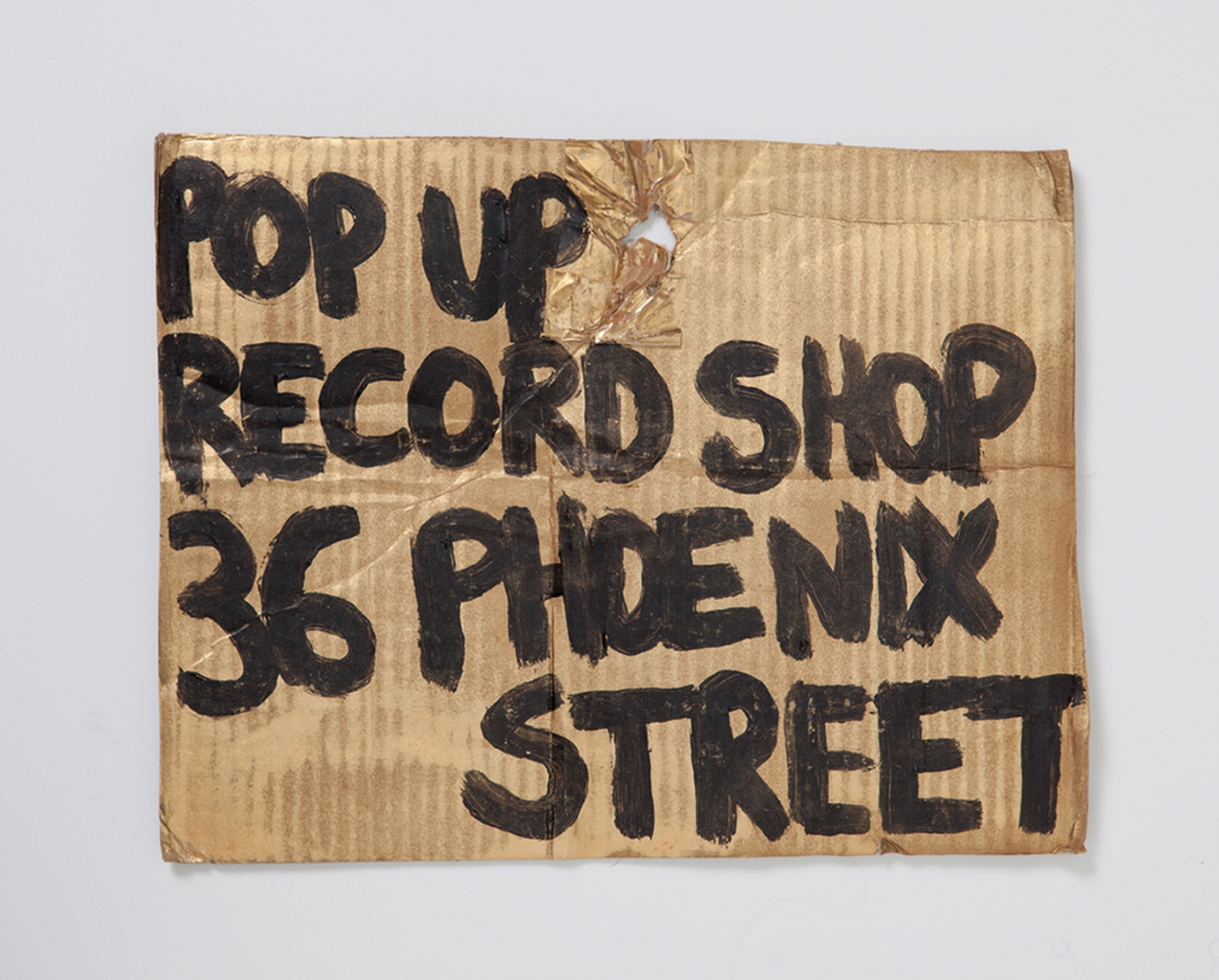
In order for images to circulate and connect, they have to be accessible in the first place. Under lockdown, this latest exhibition of Pound’s ongoing collection-centred practice has become less a Benjaminian constellation of connections than a conceptual art proposition. A gesture of aesthetic withdrawal that substitutes inadequate documentation for the real thing, his exhibition primarily serves to indicate the gap between presence and absence. The Museum of there, not there both displays and produces this gap that is a space of nostalgia or mourning, but also frustration and projection: it materialises the effort to grasp something just as it is slipping away.
Anna Parlane is a lecturer in art history and theory at Monash University.